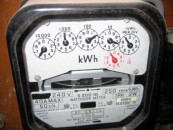Power tariff jacked up by Rs5.7 per unit
Increase to impact domestic, industrial and commercial consumers

Consumers are in for another shock as the power regulator has decided to increase electricity rate by up to Rs5.7 per unit for next financial year. The average tariff is currently Rs29.78 per unit which will go up to Rs35.5 per unit.
This hike is expected to impact domestic, industrial, and commercial consumers, who are already dealing with high inflation. A key component of the decision is an increase in power purchase price (PPP) that has gone up to Rs27 per unit for next financial year against Rs22.90 per unit for the ongoing year.
The National Electric Power Regulatory Authority (Nepra) has increased the PPP by 17.9% for next financial year. The PPP for the ongoing fiscal year is Rs22.95 per unit that has been increased to Rs27 per unit for next financial year.
The consumers who are paying regular electricity bills will be paying Rs2,116.250 billion as capacity charges that amount to 65% or Rs17.66 per unit, and energy charges are Rs9.69 per unit.
The total PPP of distribution companies (DISCOs) for the FY 2024-25, after excluding the share of the K-Electric (KE)—the power utility that supplies power to Karachi— works out to Rs3,277.506 billion.
This includes Rs1,161.257 billion for fuel and variable operation and maintenance (O&M) cost and Rs2,116.250 billion as capacity charges. The capacity charges translate to Rs6,957/kW/month, based on the projected average monthly Maximum Demand Indicator (MDI) of 25,348 MW.
Thus, the capacity charges account for approximately 65% of the total projected PPP of DISCOs, while the energy cost accounts for around 35%.
The power regulator in a decision said it observed
that the Central Power Purchasing Agency (CPPA-G) has projected growth under three scenarios: 3%, 5%, and 10%. However, the actual demand during the last two years, FY 2022-23 and FY 2023-24, has shown negative growth.
For FY 2022-23, overall generation reduced by around 10% compared to FY 2021-22.
Similarly, for FY 2023-24 (projected to June 2024), total generation has shown a slight decrease of around 1.5% compared to FY 2022-23.
Additionally, the KE’s electricity share from the national grid is assumed to increase to 11,030 GWh during FY 2024-25. Therefore, DISCOs’ demand would be growing at a rate less than the overall rate assumed by CPPA-G in the report.
Furthermore, as per the International Monetary Fund (IMF) data mapper report, GDP growth is projected to increase to 3.5% for FY 2024-25, compared to 2.38% for FY 2023-24 with inflation also expected to decrease significantly in FY 2024-25.
Although the improved economic situation may lead to additional electricity consumption, Nepra considers the demand growth of 5% and 10% assumed by CPPA-G as ambitious and unlikely.
Therefore, considering past trends, GDP projections for FY 2024-25, and other economic indicators, Nepra has decided to accept a demand growth of 3% for FY 2024-25, including the impact of energy to be procured by DISCOs through bilateral contracts.
The exchange rate parity significantly impacts electricity prices in Pakistan.
Power sector costs are generally tied to dollar indexation, and any change in exchange rate parity directly affects the energy and capacity charges of the generation segment, constituting over 90% of the total cost of the power sector.
The CPPA-G has projected PKR/USD at 275 and 300 under different PPP forecast scenarios.
The power regulator noted that the prevailing exchange rate as of June 2024 is around Rs279/USD. Although the PKR has shown stability over the past few months, it remained above Rs280/USD on average during FY 2023-24, peaking at Rs297/USD in September 2023.
Historically, over the past 15 years, the PKR has devalued by around 10% per annum against the USD and may exceed Rs300/USD if the same trend continues. Given these facts, Nepra considers CPPA-G’s projection of an exchange rate parity of Rs300/USD for FY 2024-25 reasonable.
During the public hearing, the All Pakistan Textile Mills Association (APTMA) and the Federation of Pakistan Chambers of Commerce and Industry (FPCCI) submitted that the industry was not consulted for constructing demand scenarios, and the CPPA-G has not specified the underlying basis for assuming 3-5% demand growth, especially considering the decrease in power consumption.
Industrial contribution to GDP has been contracting since FY 23, with little growth expected, mainly due to agriculture, which is shifting towards solarization of tube-wells.
Consequently, the demand growth scenarios are unrealistic and will result in high quarterly tariff adjustments throughout the next financial year.
They said the assumed exchange rate (1 USD = 275) is problematic, as the USD to the PKR exchange rate has consistently been above this for over a year, with further devaluation expected.
Similarly, the assumption of 12.20% inflation is weak and requires further sensitivity analysis, as inflation is likely to increase with expected exchange rate devaluation and subsequent energy price increases.
They further said that the assumptions about RLNG pricing must be revisited considering long-term LNG contracts and downward trends in global oil prices, as the long-term contracts of 1000 MMCFD are indexed to international oil prices.



















COMMENTS
Comments are moderated and generally will be posted if they are on-topic and not abusive.
For more information, please see our Comments FAQ